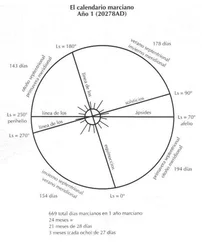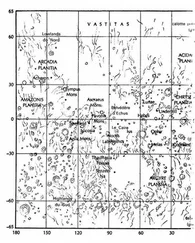Kim Robinson - Shaman
Здесь есть возможность читать онлайн «Kim Robinson - Shaman» весь текст электронной книги совершенно бесплатно (целиком полную версию без сокращений). В некоторых случаях можно слушать аудио, скачать через торрент в формате fb2 и присутствует краткое содержание. Город: New York, Год выпуска: 2013, ISBN: 2013, Издательство: Orbit, Жанр: Фантастика и фэнтези, Историческая проза, на английском языке. Описание произведения, (предисловие) а так же отзывы посетителей доступны на портале библиотеки ЛибКат.
- Название:Shaman
- Автор:
- Издательство:Orbit
- Жанр:
- Год:2013
- Город:New York
- ISBN:9780316235570
- Рейтинг книги:4 / 5. Голосов: 1
-
Избранное:Добавить в избранное
- Отзывы:
-
Ваша оценка:
- 80
- 1
- 2
- 3
- 4
- 5
Shaman: краткое содержание, описание и аннотация
Предлагаем к чтению аннотацию, описание, краткое содержание или предисловие (зависит от того, что написал сам автор книги «Shaman»). Если вы не нашли необходимую информацию о книге — напишите в комментариях, мы постараемся отыскать её.
From the New York Times bestselling author of the Mars trilogy and 2312 comes a powerful, thrilling and heart-breaking story of one young man's journey into adulthood -- and an awe-inspiring vision of how we lived thirty thousand years ago.
Shaman — читать онлайн бесплатно полную книгу (весь текст) целиком
Ниже представлен текст книги, разбитый по страницам. Система сохранения места последней прочитанной страницы, позволяет с удобством читать онлайн бесплатно книгу «Shaman», без необходимости каждый раз заново искать на чём Вы остановились. Поставьте закладку, и сможете в любой момент перейти на страницу, на которой закончили чтение.
Интервал:
Закладка:
Once back in camp, the captives lifted their loads up onto a wooden platform which was perched on top of a thick dead tree trunk buried in the ground such that its top was well over head high. A platform had been built in a circle around the trunk just under its top, and up on that raised floor lay many twentytwenties of fish, all frozen hard as flint, and set so they formed a wall all around the outside of the platform, with a single open passage in the wall at the top of a ladder. Caribou furs protected them from the sun.
Up on the platform, which reminded Loon of his pack’s raven burial platform, he discovered that inside the wall of frozen fish were carefully arranged piles of sealskin bags, each bag made of a whole skin that had been stripped off the animal without cutting the skin much; the holes had been sewn up, and now each skin lay bulbously full of frozen fat, visible through drawstrings. One of the jende opened up the drawstring on one of these bags and scooped out some semi-solid white fat into a bucket. Loon was startled by the sight of all the bags, so startled that he briefly came out of the waking sleep he had fallen into. The food stored on this platform would feed the camp’s people for two or even three winters. He had never seen anything like it. These people were rich.
Not only that, but they kept captive wolves, as well as captive people. Loon was again startled to wakefulness when he first saw this: there at the eastern end of their camp, under the groaning ice wall, stood a roofless house of sorts, a circular wall made of a line of tall alder shoots tied together, and inside this enclosure was trapped a small pack of wolves, snarling and snapping whenever the jende opened the short door into it. But when the jende entered, the wolves shrank back and rolled on their backs and peed themselves as they stared up pleading at the northers, licking their own muzzles hungrily. The northers threw them chunks of the same offal they fed to the human captives, and the wolves eagerly snatched the chunks and wolfed them down. Then they crowded around the norther men, heads low, wagging their tails, and the northers reached out and grabbed them by the ears, then tugged their heads this way and that! And the wolves only wagged their tails harder! Loon watched this agape, and marveled again when the men let the wolves out of the enclosure, and snowshoed off with a few of the wolves dashing happily around them. And when they came back to camp late that day, the wolves were still there with them, pulling chunks of wood and bloody meat over the snow, at the end of ropes tied to rope harnesses around the wolves’ forelegs, something like the harnesses people put around their waists to pull travois.
Loon could scarcely believe his eyes. These people were… he didn’t know what.
He found in the days that followed that the main thing the northers wanted from their human captives was not to carry food up from the great salt sea, which their captive wolves could do, but rather to gather firewood from the ravines to the east of their camp. So the days spent walking down to the shore and bringing back fish and seals and fat turned out to be much less frequent than long hikes to the east along the line of hills, turning up one or another of the short valleys that rose to the great ice wall. These valleys had floors filled with forests that were surprisingly thick, even though the tallest trees were no more than head high. The trees were mostly the same types as those to the south, with more birch and larch, less pine, and no oaks; but all of them small. Walking among these trees all day made Loon feel like he had entered some land on the other side of the sky where living things were smaller, turning ordinary people into giants. Maybe this was part of what had made the northers so strange.
Their jende guides or guards carried stone wedges and blades fixed sideways into branches, and they swung these bladed branches to make a first cut in trees, low to the ground, after which they inserted a stone wedge into the cut and had the captives pound the wedge with rocks, or the thick ends of stout branches, until the tree’s trunk cracked across and fell. The captives were also sent farther upstream in the steep valleys to forage for downed wood, or dead branches that could be broken off trees.
The jende made no effort to guard the captives during their forays up these little valleys; there was nowhere to escape to, except to death itself. Nevertheless, Loon found this neglect interesting enough for it to break through his waking sleep and give him something to think about from time to time. Sometimes the jende had some of their captive wolves with them on these forages; that was perhaps another reason they didn’t have to guard their human captives. But if he had Elga with him on one of these forage days, and they managed to flee, and if they had sacks with bags of fat in them, and snowshoes, why couldn’t they simply run faster than any pursuit could catch them? For he had the growing impression that he and Elga might be faster than these northers over a long run.
Although they wouldn’t be faster than the wolves. But if they could hold the wolves off with thrown rocks, drive them away, then who human could catch them? But could you throw and run successfully at the same time?
These questions poked at him, and he pretended to be as insensible as before, but it was a pretense, because he had a little itch now. He was awake again, or at least in a dream that was not so benumbed. He started looking for ways to steal things from the jende and hide them away. At first he didn’t find any, but he was looking.
Chapter 37
One day he saw which house Elga was kept in, because they both stepped out of their houses at the same time. She didn’t see him at first, and he stared at her intently. He couldn’t tell how they were treating her. He supposed she was again the wife of some jende in that house. He assumed or hoped she was being treated as jende rather than captive, but he wasn’t sure. Maybe the northers’ wives were captives too, although they did keep a women’s house at the upper end of their valley tuck, for their monthlies he assumed. And the women in his house were cheerful and active around the fire, cooking everything they all ate. How Elga was joining that or not, he could not tell.
Now that he had an itch to know things, it was quite an itch; but it could not be shown.
There was a young man among the captives who spoke like Loon, and who also understood the jende. As they ate at night in the cold trap, he told Loon that he was a member of the eagle clan. None of the jende were eagles, he said; they didn’t even have clans.
This youth didn’t know how long he had been a captive in the house. Many months, he said, as if it had been more than anyone could count.
While Loon was outside gathering wood, he looked around and told himself stories about how he and Elga would make their escape. All the stories had obvious problems in terms of their actual performance. On some of his days out he would be free to run away for a fist or two, but the jende would soon know he had gone, and set their captive wolves after him, perhaps. Also, during the days he didn’t know where Elga was. During the nights he knew which house she was in, but then he too was in a house, under the eye of the jende.
When mornings were orange, they too said a storm was on its way. During stormy days they stayed inside and sat around cooking, eating, making things, sleeping, or telling stories. The jende men quickly grew impatient at staying in. Once they drove Loon out of the house wearing only his leggings, and instructed him to run around the shelter while they threw snowballs at him, shouting happily at the storm to go away. The next day it did. This was the only time they performed anything like a shaman’s ceremonies, and really it was more like a joke. Afterward they fed him a chunk of cedar salmon and a roast caribou shank.
Читать дальшеИнтервал:
Закладка:
Похожие книги на «Shaman»
Представляем Вашему вниманию похожие книги на «Shaman» списком для выбора. Мы отобрали схожую по названию и смыслу литературу в надежде предоставить читателям больше вариантов отыскать новые, интересные, ещё непрочитанные произведения.
Обсуждение, отзывы о книге «Shaman» и просто собственные мнения читателей. Оставьте ваши комментарии, напишите, что Вы думаете о произведении, его смысле или главных героях. Укажите что конкретно понравилось, а что нет, и почему Вы так считаете.











